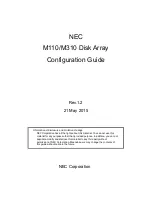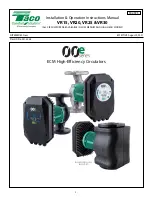
– 14 –
SECTION 4
ELECTRICAL ADJUSTMENTS
Note:
1. CD block is basically designed to operate without adjustment.
Therefore, check each item in order given.
2. Use YEDS-18 disc (Part No.: 3-702-101-01) unless otherwise
indicated.
3. Use the oscilloscope with more than 10 M
Ω
impedance.
4. Clean an object lens by an applicator with netural detegeent
when the signal level is low than specified value with the fol-
lowing checks.
S-Curve Check
Connection
Procedure:
1. Connect an oscilloscope to TP5 (FE: IC107
!∞
pin) on SERVO
board.
2. Connect TP4 (FEI: IC105
@ª
pin) and TP (VC: CN108
2
pin) on Servo board with a lead wire.
3. With the disc (YEDS-18) loaded, turn ON the POWER switch
to execute focus searching.
4. In such a case, confirm the symmetry and level (p-p value) of
the waveform (S-curve) on the oscilloscope.
S-curve waveform
5. After check, remove the lead wire connected in step 2.
Note: • Try to measure several times to make sure that the ratio
of A: B or B: A is more than 10: 7.
• Take sweep time as long as possible and light up the
brightness to obtain best waveform
RF Level Check
Connection:
Procedure:
1. Connect an oscilloscope to the TP (RFO: CN108
3
pin)
2. Turn ON the POWER switch.
3. Load the disc (YEDS-18), and play the 5th music with
·
(PLAY) and AMS Keys.
4. Confirm that a waveform and RF level on the oscilloscope are
proper.
Note: Clear RF signal waveform means that the shape “
≈
” can
be clearly distinguished at the center of the waveform.
RF signal waveform
VOLT/DIV: 200 mV
TIME/DIV: 500 ns
(with the 10 : 1 probe
in use)
level: 1.2 Vp-p
E-F Balance (Traverse) Check
Connection:
Procedure:
1. Connect TP (ADJ: CN105
3
pin) on Servo Board to GND,
and TP3 (TEI: IC105
@¶
pin) to TP (VC: CN108
2
pin) with
lead wires respectively.
2. Connect on oscilloscope to TP (TE: CN108
1
pin).
3. Turn ON the POWER switch.
4. Load the disc (YEDS-18) and press
·
(PLAY) button.
5. Confirm that a waveform on oscilloscope is vertically sym-
metric to A[Vdc], and also its level is proper.
Traverse waveform
+
–
SERVO board
TP (RFO)
TP (VC)
oscilloscope
(AC range)
+
–
SERVO board
TP (TE)
TP (VC)
oscilloscope
(DC range)
0Vdc
B
A
symmetric
level: 1.3 ± 0.6 Vp-p
At this time, A/B
×
100 = ± 22 (%) or less
6. After check, remove the lead wire connected in step 1.
RF PLL Free-run Frequency Check
1. Connect a frequency counter to the TP (XPLCK: CN106
1
pin).
2. Turn ON the POWER switch.
3. Load the disc (YEDS-18) and press
·
(PLAY) button.
Confirm that the frequency at TP (XPLCK) is 4.3218MHz.
FOCUS/TRACKING AUTO GAIN DATA SETTING
Refer to 1-1. Writing focus/tracking auto gain data on page 3.
+
–
Frequency counter
SERVO board
TP (XPLCK)
+0.25
–0.20
+
–
SERVO board
TP5 (FE)
TP (VC)
oscilloscope
within 3.0 ± 1.0 Vp-p
A
B
symmetric
Summary of Contents for CDP-X3000
Page 5: ... 5 SECTION 2 GENERAL This section is extracted from instruction manual ...
Page 6: ... 6 ...
Page 7: ... 7 ...
Page 8: ... 8 ...
Page 9: ... 9 ...
Page 20: ... 20 ...
Page 22: ......
Page 23: ......
Page 24: ......
Page 25: ......
Page 26: ......
Page 27: ......
Page 29: ......
Page 30: ......
Page 31: ......
Page 32: ......















































